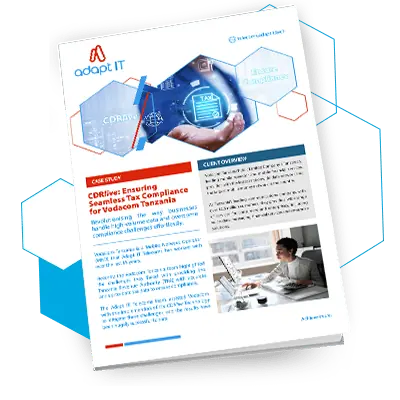Table of Contents
ToggleThe Internet of Things (IoT) automation is changing the way we work and live. Digital transformation and IoT have created opportunities to optimise efficiency both at home and within a business. We are seeing a rise in the popularity and use of smart technology and IoT systems to create smart homes and smart offices.
This technology is also being utilised for IoT automation to enhance business operations and improve efficiency. For IoT automation to take place and for this innovative technology to work, it requires connectivity. Below we examine the relationship between IoT automation, connectivity, and its effect on business operations, especially where data connectivity management is concerned.

IoT Overview
The Internet of things is a network of connected devices that communicate with each other. This can be smartphones, refrigerators, wearables, smart lights, laptops, smart thermostats, smart appliances, robotics, tablets, smart machines, industrial machines, smart vehicles, and more.
These IoT devices utilise sensors and processors to collect and analyse data from their surrounding environments. The collected data is then shared with other IoT devices via a gateway. This data is then interpreted via cloud computing or locally and used to create actions. For example, setting a short timer on in the office to switch on the lights at a specific time or when the sensor is alerted to movement.
In recent years the IoT market has grown exponentially, and this trend is set to continue. It is expected that global IoT revenues will triple by 2025 to just over $900 billion, according to GSMA’s 2021 Mobile Economy report. The success of the IoT market primarily revolves around reliable and consistent connectivity. We explore this in more detail below.

The importance of connectivity
Connectivity remains a foundational element for IoT solutions, including IoT automation, as wireless connectivity is a critical enabler of IoT. Without it, the devices will not be able to connect, share and analyse data or perform actions. Connectivity is at the centre of every IoT ecosystem.
Globally there are several different ways in which these devices can connect. These include cellular connections like 3G, 4G, or 5G, fixed-line connections, short-range connections, low power wide area connections, amongst others. Three of the most popular types of connectivity utilised include:
- LAN Local Area Network – a LAN is a fixed-line connection. This proprietary computer network allows designated users to access the same system connection and network in a common location, usually within the same office or building.
- Sigfox – this is an example of a low power wide area connection. This is a connection categorised by its long range, low data rate, low cost and affordability. It has specifically been developed to provide wireless connectivity for devices like remote sensors, actuators and other machine-to-machine (M2M) and IoT devices.
- GSM (Global System for Mobile communication) – this connection type is an example of a cellular connection. It is a digital mobile network widely used by mobile phone users worldwide. GSM is currently the most commonly used network technology in the Internet of Things (IoT) applications for its simplicity, affordability, and accessibility.
Each of the above provides varying degrees of connectivity, enabling IoT devices to work, connect, and communicate effectively.

IoT and Automation
IoT utilises artificial intelligence and machine learning which is what makes automation possible. This technology is evolving the automation industry as we know it and changing how businesses are operating.
In business, IoT connectivity allows you to automate operations and processes. The smart nature of this technology will enable you to program these devices, their actions and protocols according to your unique business needs.
For example, when examining employee tasks, you can automate menial tasks so that your team has more time to work on other tasks that could be more worthwhile in terms of business productivity and profitability. This not only saves your employees time but saves resources and enhances the overall efficiency of your business. There are several other benefits to IoT automation which include:

- Reduction in downtime – when your business processes are automated, there are no restrictions on work hours, meaning that you can operate across time zones effectively.
- Operational efficiency – with automated processes and operations, you can enhance the speed of operations, the accuracy of tasks, and reduce human error. This is especially the case in manufacturing and industrial IoT (IIoT) processes relating to asset management, inventory management, location tracking and more.
- Better use of resources and assets – automation allows for scheduling and monitoring, enabling you to enhance resource and asset management. This also impacts convenience as it allows you to schedule and manage your business infrastructure, preferences, hardware, control systems, usage and more from a far.
- Cost-effectiveness – through IoT automation, you are able to reduce downtime and ensure that maintenance is automatically scheduled and controlled, enhancing your equipment and its production rate.
- Understand your customer segments better – IoT devices collect data and analyse it, which means accumulating more user-specific data and analytics from your customer base and their behaviour. This insight can be utilised to enhance customer experience, services and offerings, which in turn reduces customer churn and increases revenue.

Adapt IT Telecoms IoT Solutions
Adapt IT Telecoms IoT solution is powered by APN-as-a-Service technology and is utilised to ensure effective data connectivity management. This solution focuses specifically on devices connected to Global System for Mobile communication (GSM) because they require several data management services and applications to ensure business efficiency.
This solution allows you to connect all your organisation’s mobile devices, laptops, machines, desktops, etc., to your company network and allows employees to connect from anywhere and anytime. This added connectivity comes with a need for businesses to manage elements related to data, monitoring and tracking assets, and ensuring secure and safe network access. If this is not managed effectively, these elements can negatively impact productivity and efficiency, ultimately affecting profitability.
In addition, this solution enables a business to manage the fraudulent usage of SIMs and data that might occur. Through the use of this solution, you are able to access the status and location of all business assets in real-time as well as track and manage the device’s connection. In this way, you are able to manage the fraudulent use of SIMs or data by blocking use or suspending the data allocation.

This solution further allows you to provision, lock and wipe devices remotely if fraudulent activity is detected. Additionally, you are able to make use of geo-fencing capabilities which enables you to lock devices and assets to defined regions or geographical areas. This enhances the safety and security of all business assets, SIMs, data, and information.
This IoT data connectivity management system utilises IoT automation to streamline, monitor, analyse, provision, and manage your business IoT devices, Machine-to-Machine (M2M) components, and SIM cards from one centralised platform. You can also automate upgrades, alerts, messages, and more using this innovative platform.
As you can imagine, this solution brings with it many business and operational benefits. It allows you to track and manage data spend and usage as well as mitigate the risk of SIM and data fraud, which means you are able to identify opportunities to save costs. It enhances your operations, workforce mobility and reduces downtime as you can provision data, devices, and SIMs from anywhere at any time.
One of the most important benefits of this solution is that you can ensure reliable and stable connectivity that your businesses IoT devices depend on to work efficiently. Without this connectivity, your IoT ecosystem, operations and efficiency would not function.
Conclusion
IoT capabilities continue to impact the world of business as we know it. As this technology grows and develops, we expect to see more and more businesses taking advantage of IoT automation to improve business operations, processes, and efficiency. IoT and its applications, automation included, is only possible if there is a strong reliable source of connectivity, as this will ultimately determine the success of IoT technology, automation, and its implementation in business.

Provide additional products to corporate clients and reduce customer churn.
Explore the intricate details of APN-as-a-Service and how it enables IoT connectivity, enhance network security, and facilitates the effective management of an organisation’s IoT ecosystem

Steven Sutherland experienced Adapt IT Divisional Executive, dynamic business leader for their Telecoms Division with a demonstrated 25-year history in the telecommunications and IoT sectors. Strong global marketing, sales, and business development professional with 15 plus years focused experience in the Southern and Rest-of-Africa markets and a unique blend of entrepreneurial spirit combined with a passion for both technology and business.
At Adapt IT Steven is responsible for building and growing the Telecoms Division on top of its industry-proven software competencies including but not limited to Customer Experience and Self Service, NextGen VAS, IoT, FINTECH, and Advanced Analytics. Steven is always looking forward to an opportunity to demonstrate the value that his 20 plus years of experience in these disciplines can bring to your business




